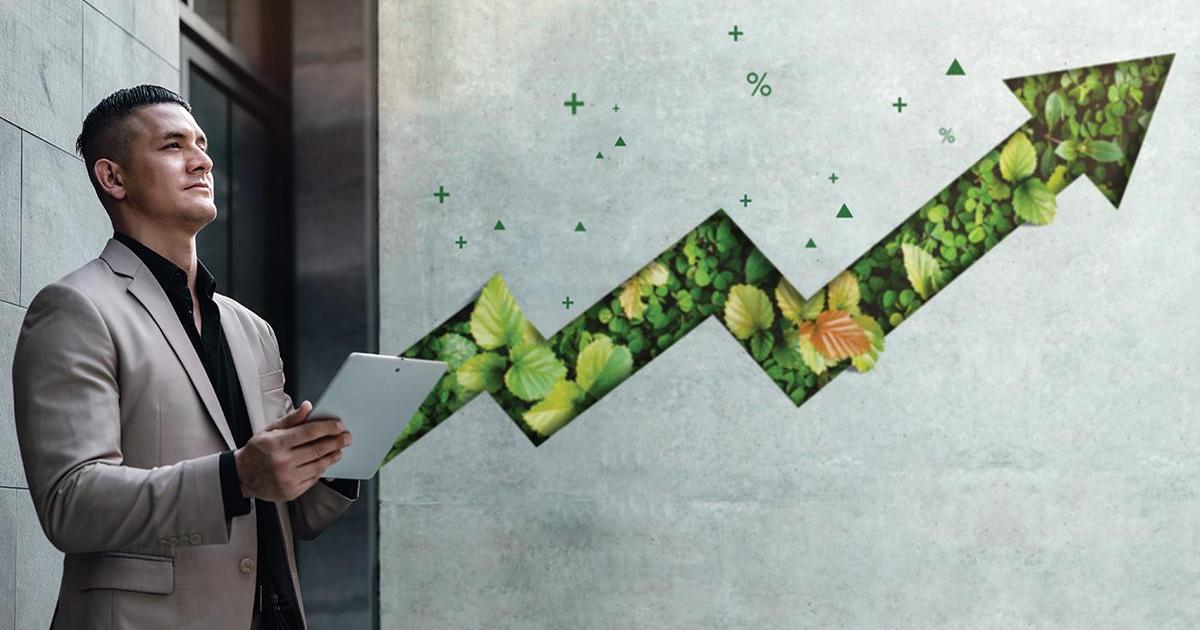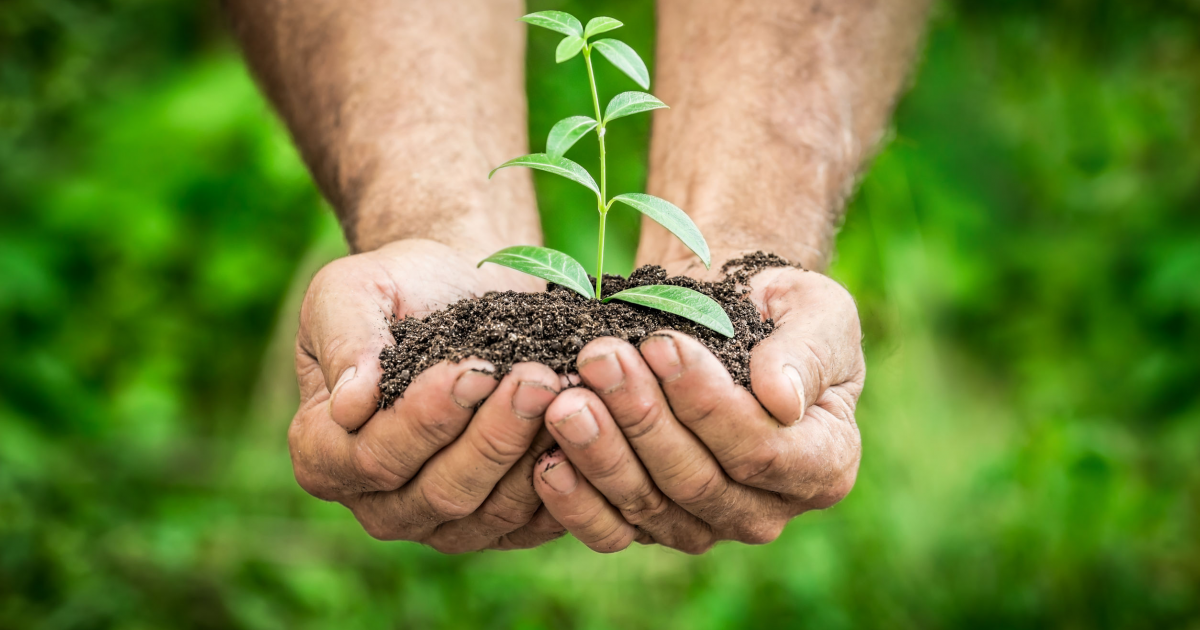The Circular Economy: How Businesses Are Embracing Sustainability
In an era defined by environmental concerns and resource depletion, the concept of the circular economy has emerged as a beacon of hope. This paradigm shift challenges the linear ‘take-make-waste’ model that has dominated business for so long. Instead, it emphasizes the regenerative and sustainable use of resources, with a focus on minimizing waste and maximizing value. In this article, we’ll explore the intricacies of the circular economy and how businesses are not just embracing but thriving within this sustainable framework.
Defining the Circular Economy
At its core, the circular economy is about rethinking the traditional approach to production and consumption. It encourages a closed-loop system, where products, materials, and resources are reused, remanufactured, and recycled. The goal is to eliminate waste, reduce environmental impact, and create a self-sustaining ecosystem.
Importance of Sustainability in Business
Sustainability isn’t just a buzzword; it’s a business imperative. Companies are recognizing that adopting sustainable practices isn’t just good for the planet; it’s also good for their bottom line. Sustainability efforts enhance brand reputation, reduce operational costs, and appeal to a growing eco-conscious consumer base.
The Principles of Circular Economy

Reducing Waste Through Reuse
One of the cornerstones of the circular economy is the concept of reuse. It’s about shifting away from the disposable culture that has dominated modern consumerism. Instead, businesses are now focusing on creating products that can be used, refurbished, and repurposed, reducing the need for constant replacements.
Case Study: Patagonia’s Worn Wear Program
Patagonia, the outdoor clothing giant, has made waves with its Worn Wear program. This initiative encourages customers to buy and sell used Patagonia gear, extending the lifecycle of their products. It’s a prime example of how a circular mindset can be profitable and sustainable.
Recycling and Repurposing Materials
Recycling isn’t a novel concept, but the circular economy takes it to a new level. It involves not only recycling materials but also finding innovative ways to repurpose them. This reduces the demand for new resources and minimizes environmental impact.
The Role of Innovative Recycling Technologies
Innovations like chemical recycling and 3D printing with recycled materials are transforming recycling from a last-resort option to a viable and eco-friendly choice. These technologies are making it easier for businesses to close the loop.
Extending Product Lifecycles
Extending the life of products is a fundamental principle of the circular economy. This can be achieved through better design, durability, and maintenance practices. It’s about creating products that are built to last, reducing the need for constant replacements.
Strategies for Prolonging Product Use
Businesses are now exploring various strategies to encourage customers to use their products for longer. These include offering repair services, providing spare parts, and incentivizing upgrades instead of replacements.
Designing for Durability and Repairability
Circular design involves creating products that are easy to repair and maintain. This not only reduces waste but also fosters a sense of attachment between customers and their possessions.
Examples of Products Designed for Longevity
From smartphones with replaceable batteries to modular furniture, businesses are redesigning products with longevity in mind. These examples showcase how sustainability and profitability can go hand in hand.
Sustainable Supply Chain Management

Sourcing Sustainable Materials
Businesses are reevaluating their supply chains to ensure that the materials they use are sustainable and ethically sourced. This shift promotes responsible extraction and minimizes harm to ecosystems.
Exploring Eco-friendly Material Alternatives
Innovative materials like mycelium-based leather and ocean plastic textiles are gaining traction as sustainable alternatives to traditional materials. They offer new opportunities for circularity in supply chains.
Ethical Manufacturing Practices
Fair labor standards and ethical production are integral to sustainable supply chains. Companies are increasingly focused on ensuring that their products are made under humane conditions.
Fair Labor Standards and Ethical Production
The circular economy isn’t just about materials; it’s also about the people involved in the production process. Ethical practices ensure that workers are treated fairly and working conditions are safe.
Transportation and Logistics Efficiency
Efficient transportation and logistics play a vital role in reducing a company’s carbon footprint. Businesses are optimizing routes, embracing green transportation methods, and striving for energy efficiency.
Reducing Carbon Footprint in the Supply Chain
Companies are investing in renewable energy sources, offsetting emissions, and adopting eco-friendly transportation options to minimize their environmental impact throughout the supply chain.
Circular Business Models

Product-as-a-Service (PaaS) Models
The shift from owning to accessing products is reshaping industries. PaaS models, where customers pay for the use of a product rather than owning it, are gaining popularity. This reduces resource consumption and encourages manufacturers to design products for durability.
How PaaS Reduces Resource Consumption
Under PaaS models, products are utilized to their fullest potential, often leading to fewer overall products being manufactured. This reduces resource extraction, production emissions, and waste.
Sharing Economy Initiatives
Companies like Airbnb and Uber have revolutionized the way we think about ownership. The sharing economy encourages people to make the most of their assets, reducing the need for excess production.
The Success of Companies like Airbnb and Uber
These companies have not only disrupted traditional industries but have also demonstrated the economic viability of sharing and renting goods and services instead of owning them outright.
Resale and Secondhand Markets
The secondhand market is thriving, with consumers buying and selling used goods online. This reduces the demand for new products and keeps items in circulation longer.
Thriving Secondhand Marketplaces
Platforms like eBay, Poshmark, and ThredUp provide a marketplace for used goods. They offer an opportunity for consumers to declutter and for others to find quality items at a lower cost.
Sustainable Packaging Solutions
The Problem of Single-Use Plastics
The ubiquity of single-use plastics has devastating consequences for the environment. The circular economy aims to address this issue by rethinking packaging materials.
Innovative Packaging Alternatives
From mushroom-based packaging to edible packaging, innovative alternatives are emerging that minimize waste and reduce the environmental impact of packaging.
Biodegradable and Compostable Packaging
Packaging that can break down naturally without harming the environment is gaining popularity. However, it’s essential to understand the benefits and challenges of these materials.
Benefits and Challenges
Biodegradable and compostable packaging offer eco-friendly alternatives, but they require specific conditions for proper decomposition, raising questions about their real-world effectiveness.
Minimalist Packaging Design
Simplicity is key in circular packaging design. Minimalist packaging not only reduces waste but also showcases a brand’s commitment to sustainability.
Less is More: Aesthetic and Eco-Friendly
Businesses are discovering that minimalist packaging can be both visually appealing and environmentally responsible, proving that less can indeed be more.
Circular Economy in Technology
E-Waste Management
The proliferation of electronic devices leads to a staggering amount of electronic waste. Effective e-waste management is essential for a circular economy.
Challenges and Solutions
Dealing with e-waste is complex, but emerging solutions like electronic recycling and refurbishment programs are helping to mitigate this growing problem.
Upcycling in Electronics
Upcycling electronics involves repurposing old devices into new, innovative products. This creative approach breathes new life into discarded gadgets.
Creative Ways to Give Old Devices New Life
From turning old smartphones into security cameras to transforming retired laptops into digital art frames, upcycling is a sustainable and imaginative approach.
Sustainable Data Centers
Data centers are energy hogs, but innovative design and renewable energy sources are making them more sustainable.
Reducing Energy Consumption in Tech Infrastructure
Technological advancements are driving data centers to become more energy-efficient, minimizing their environmental footprint.
Circular Economy in Fashion

Fast Fashion vs. Sustainable Fashion
Fast fashion’s rapid production and disposal of clothing contribute significantly to waste and pollution. Sustainable fashion offers a more responsible alternative.
The Environmental Impact of Fast Fashion
Fast fashion’s relentless pursuit of trends results in massive textile waste, high water consumption, and carbon emissions. Understanding its impact is crucial to embracing sustainable alternatives.
Sustainable Materials in the Fashion Industry
From hemp and bamboo to recycled fabrics, sustainable materials are revolutionizing the fashion industry, offering eco-conscious choices to both designers and consumers.
Hemp, Bamboo, and Recycled Fabrics
These materials are not only sustainable but also versatile, allowing designers to create clothing that is both fashionable and environmentally friendly.
Slow Fashion Movement
The slow fashion movement advocates for quality over quantity. It encourages consumers to invest in timeless, durable pieces rather than constantly chasing fleeting trends.
Advocates for Quality over Quantity
By shifting the focus from disposable fashion to lasting, well-made garments, the slow fashion movement reduces waste and encourages a more mindful approach to clothing.
Circular Economy in Food and Agriculture
Sustainable Farming Practices
Sustainable agriculture emphasizes responsible land management, minimizing chemical inputs, and conserving resources.
Organic Farming, Crop Rotation, and Permaculture
These practices promote soil health, biodiversity, and long-term sustainability in agriculture.
Reducing Food Waste
A significant portion of food is wasted each year. Initiatives to combat food waste are crucial for a circular economy.
Initiatives to Combat Food Waste
From food rescue programs to innovative packaging solutions, various strategies are tackling the issue of food waste head-on.
Farm-to-Table Movements
Supporting local agriculture and shortening the supply chain can significantly reduce the environmental impact of food production and distribution.
Supporting Local Agriculture
Consumers, restaurants, and businesses are increasingly sourcing their food locally, fostering a more sustainable and resilient food system.
Circular Economy and Consumer Behavior

The Role of Education and Awareness
Educating consumers about the circular economy and sustainability is pivotal in driving change.
Changing Consumer Habits
Consumers are becoming more conscious of their choices, opting for eco-friendly products and supporting companies committed to sustainability.
Supportive Policies and Regulations
Government initiatives and regulations play a critical role in promoting sustainable practices.
Government Initiatives to Promote Sustainability
From tax incentives for green businesses to regulations on single-use plastics, governments are taking steps to advance sustainability.
Encouraging Responsible Consumption
Tips and strategies for consumers to make more sustainable choices in their daily lives.
Tips for Eco-Conscious Shopping
Practical advice for consumers on how to shop responsibly and support circular economy initiatives.
Measuring Circular Economy Impact
Key Performance Indicators (KPIs)
Metrics and KPIs that organizations can use to assess their sustainability efforts.
Metrics for Assessing Sustainability
A closer look at the specific metrics that can gauge a company’s progress toward circularity.
Case Studies in Measuring Success
Real-world examples of companies effectively measuring and improving their circular economy impact.
Companies Demonstrating Positive Impact
Highlighting organizations that have made significant strides in achieving circularity and sustainability.
Challenges in Quantifying Circular Economy Benefits
The complexities and obstacles in accurately quantifying the multifaceted benefits of a circular economy.
Future Trends and Innovations
Technological Advancements
Cutting-edge technologies that are poised to drive the circular economy forward.
What Lies Ahead for Circular Tech?
Predictions and insights into the future of technology in the circular economy.
Circular Economy in Emerging Markets
Exploring how circular practices are gaining ground in developing economies.
Expanding Global Sustainability Efforts
The global push toward sustainability and circularity is gaining momentum, creating new opportunities and challenges.
Collaborative Initiatives
Cross-industry partnerships and collaborations that are accelerating progress toward a circular economy.
Cross-Industry Partnerships for Sustainability
Highlighting collaborative efforts that are reshaping industries and promoting sustainability.
Conclusion
The Evolving Landscape of Circular Economy
The circular economy is not just a trend; it’s a transformative shift in how businesses operate, emphasizing sustainability, responsibility, and resilience.
The Business Imperative for Embracing Sustainability
Businesses that embrace the principles of the circular economy are not only contributing to a better planet but also positioning themselves for long-term success in an increasingly conscious and eco-aware market.
FAQ: Embracing Sustainability and the Circular Economy
What is the circular economy, and how does it differ from the traditional linear economy?
The circular economy is an economic model that aims to minimize waste and maximize the use of resources. Unlike the linear economy’s “take-make-waste” approach, the circular economy promotes the continual use, recycling, and repurposing of products and materials, creating a closed-loop system.
Why is sustainability important for businesses?
Sustainability is essential for businesses because it not only reduces environmental impact but also enhances brand reputation, reduces operational costs, and appeals to eco-conscious consumers. It is a path to long-term profitability and responsible corporate citizenship.
How can businesses reduce waste through reuse?
Businesses can implement efficient inventory management systems to minimize overstocking and prevent excess items from becoming waste. They should also explore partnerships with suppliers that prioritize reusable packaging materials to reduce single-use packaging waste. Implementing a comprehensive recycling program within the organization can help divert materials from landfills, and businesses can explore innovative technologies like 3D printing to transform waste materials into new products. Additionally, fostering a culture of sustainability among employees and customers can encourage responsible consumption and waste reduction. By adopting these strategies, businesses can contribute to a more sustainable and environmentally friendly future while also potentially reducing costs and improving their brand reputation.
What are some examples of companies successfully embracing the circular economy?
Companies like Patagonia, Airbnb, and IKEA are notable examples. Patagonia’s Worn Wear program encourages the reuse of outdoor gear, Airbnb promotes the sharing of accommodations, and IKEA is exploring sustainable materials and furniture recycling.
What is e-waste management, and why is it important in the circular economy?
E-waste management involves the responsible disposal, recycling, and upcycling of electronic devices. It’s vital in the circular economy to prevent electronic waste from polluting the environment and to recover valuable materials.
How can consumers support the circular economy in their daily lives?
Consumers can support the circular economy by choosing products designed for durability, repairing items instead of replacing them, buying secondhand goods, and reducing overall consumption. Conscious shopping and responsible disposal also play a role.
What are key performance indicators (KPIs) in measuring a company’s circular economy impact?
KPIs for measuring circular economy impact include metrics related to waste reduction, resource efficiency, product longevity, recycling rates, and carbon emissions reduction. These indicators help assess a company’s sustainability efforts.
How can businesses navigate the challenges of quantifying circular economy benefits?
Businesses can address the challenges of quantifying circular economy benefits by considering multiple metrics, conducting life cycle assessments, and collaborating with industry peers to develop standardized measurement methodologies.
What are some emerging trends and innovations in the circular economy?
Emerging trends include the use of blockchain technology for supply chain transparency, the growth of circular fashion initiatives, and the development of advanced recycling and upcycling technologies.
How can companies collaborate and form cross-industry partnerships to advance sustainability efforts?
Companies can collaborate with other businesses, NGOs, and government agencies to share knowledge, resources, and expertise. These partnerships can lead to innovative solutions, promote sustainability, and create a more significant impact in addressing in global challenges.
In our previous article about “Beating environmental issues,” we delved into the principles of sustainable supply chain management, circular business models, and much more.
For further insights into sustainable, business, technology and enviromental supply chain management and reducing the carbon footprint in the supply chain, we highly recommend reading the recent article on medium from a well-regarded sustainability blog. Their in-depth analysis and practical tips can provide valuable perspectives on how businesses can make their supply chains more eco-friendly and efficient.





